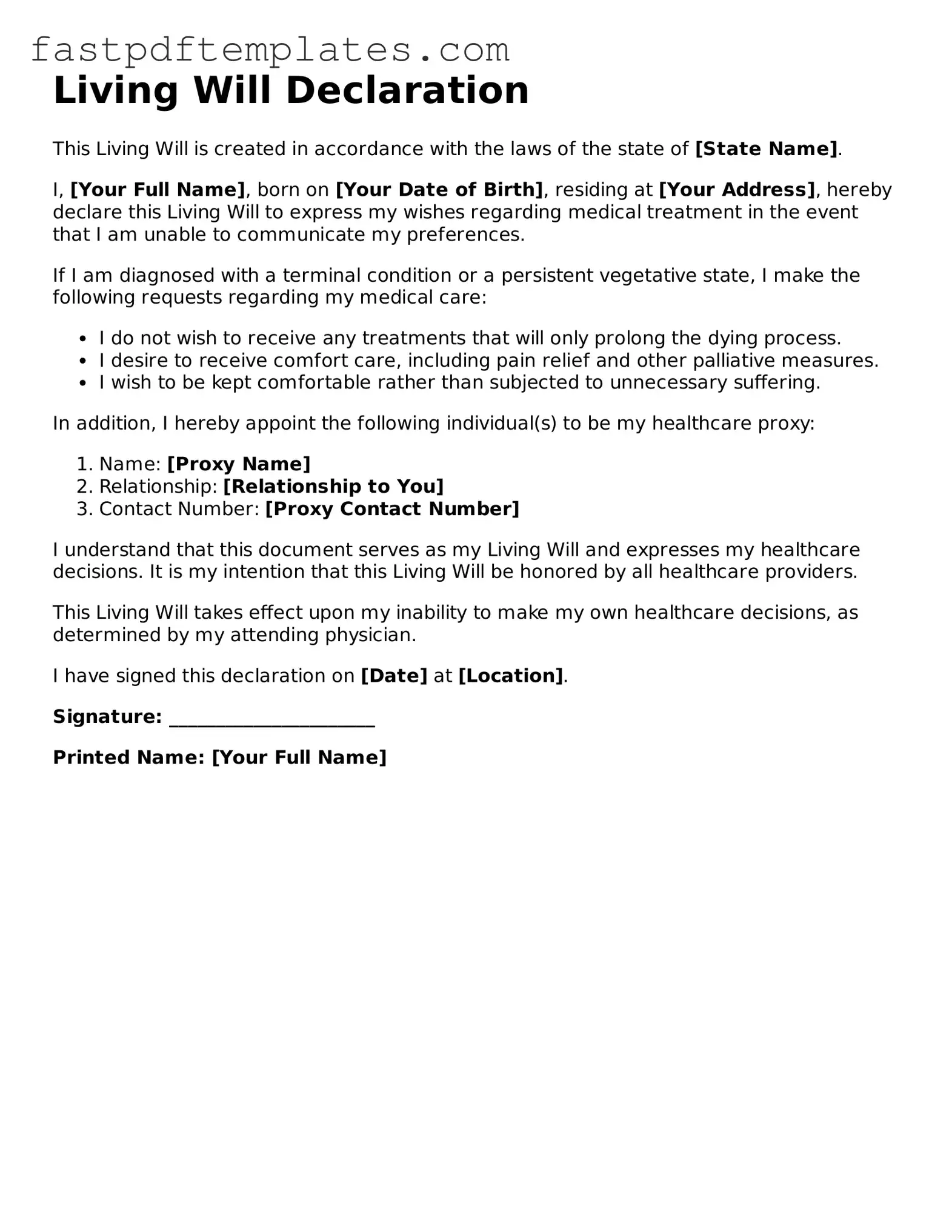Living Will Declaration
This Living Will is created in accordance with the laws of the state of [State Name].
I, [Your Full Name], born on [Your Date of Birth], residing at
[Your Address], hereby declare this Living Will to express my wishes regarding medical treatment in the event that I am unable to communicate my preferences.
If I am diagnosed with a terminal condition or a persistent vegetative state, I make the following requests regarding my medical care:
-
I do not wish to receive any treatments that will only prolong the dying process.
-
I desire to receive comfort care, including pain relief and other palliative measures.
-
I wish to be kept comfortable rather than subjected to unnecessary suffering.
In addition, I hereby appoint the following individual(s) to be my healthcare proxy:
-
Name: [Proxy Name]
-
Relationship: [Relationship to You]
-
Contact Number: [Proxy Contact Number]
I understand that this document serves as my Living Will and expresses my healthcare decisions. It is my intention that this Living Will be honored by all healthcare providers.
This Living Will takes effect upon my inability to make my own healthcare decisions, as determined by my attending physician.
I have signed this declaration on [Date] at [Location].
Signature: ______________________
Printed Name: [Your Full Name]
